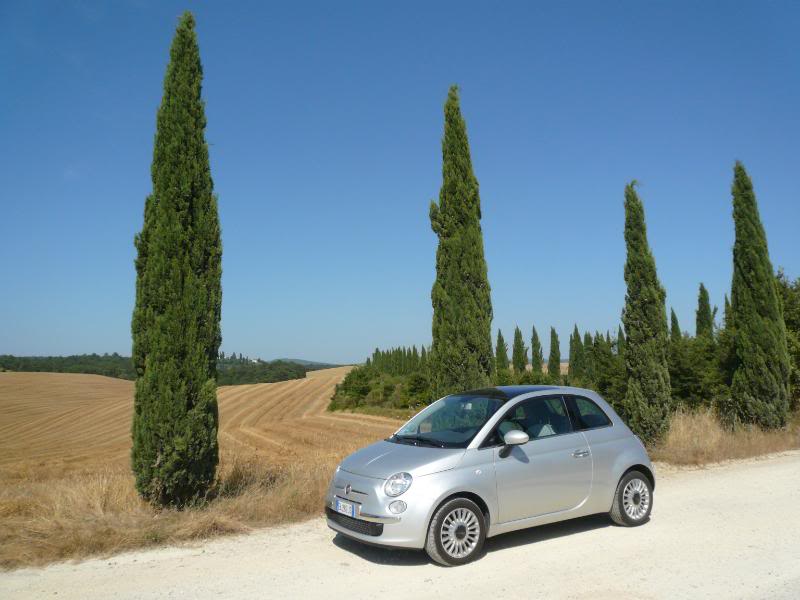 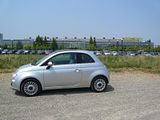 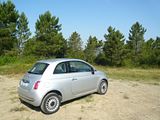  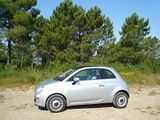 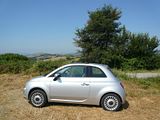 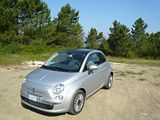   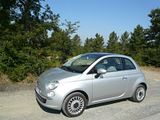 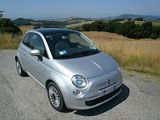   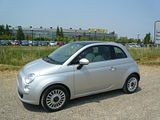 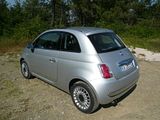 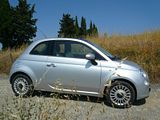 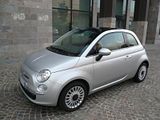 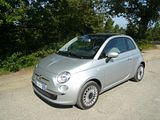  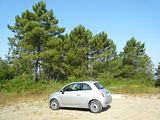 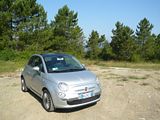 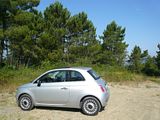 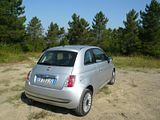 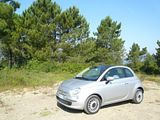 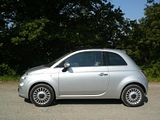 |
Popular opinion will tell you that all Italian cars simply rust away, at an even faster rate than vehicles from other countries. Whilst in the past there may have been some truth in this, you only have to look at the survival rate of the classic Fiat Nuova 500 to see that there are exceptions. This little car, sold in its millions from launch in 1957 until its demise in 1975 is still much in evidence all over Italy, and surprisingly well represented at classic car events in the UK and elsewhere even now. In 2004, when Fiat showed an updated concept version of this much loved little car, the Trepiùno, requests that they build the car were so overwhelming that they could not be ignored. Unlike many concepts that get productionised, this one made it to the showroom apparently almost unchanged, making its official debut in July 2007. 250,000 people attended the launch party, the biggest of its type for over 10 years, with the cars premiered in the squares of 30 cities in Italy. Sales started soon afterwards, and it was immediately clear that Fiat had a massive hit on their hands, with the first year’s production of 58,000 cars were sold out within three weeks. Despite the news that production would be increased to far higher levels than Fiat had anticipated could be required, there were soon reports of long waiting lists, and news that depreciation levels were minimal, as vast numbers of people tried to get their hands on what has to be one of the cutest cars on sale at present. That the car has been a success for Fiat is in no doubt, and nowhere more so than its “native” Italy (it is actually built at Tychy in Poland) where it can be seen everywhere. Despite trying every trick I could think of, a test car has so far eluded me, so I was absolutely delighted to find that Hertz at Pisa Airport had a car with my name on it when I recently arrived there.
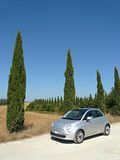 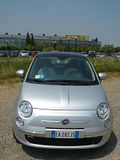  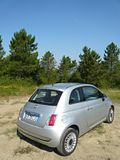 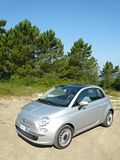 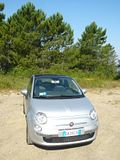  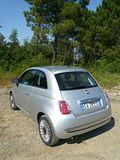 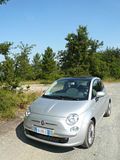 
Of course, I am no stranger to the 500, as the proud owner of a truly wonderful Abarth 500, so it was perhaps inevitable that I might be rather disappointed by the experience of driving a more prosaic model, especially as the test car was fitted with the entry level engine, the 1.2 petrol, which develops just 69 bhp. It is certainly true that this car lacks the sparkle of the Abarth, and you would struggle to conclude that it is fast. It is not. The problem seems to be in second gear, where there is quite a lack of urge at lowish revs, meaning that you gain pace almost embarrassingly slowly. You only notice than when you are already underway, at a slow speed, and second is the gear in which to start to accelerate away and very little seems to happen. The brio of older Fiats, which would willingly rev themselves into almost destruction seems strangely absent, or so I thought until I discovered how to get the best out of the car. The issue is that if you change into second from first as if you were driving a car with lots of torque, you will struggle. Rev the car hard in first gear, and hey presto, there is far more oomph available when you hit second. So, after all, you do have to drive this car hard, and the only time you will have a real challenge is as you slow down, say in traffic and then need to accelerate away, when you may find that going into bottom gear will make all the difference. Apart from this one issue, the little 1.2 engine seems decently fit for purpose and the car can easily keep up with the cut and thrust of Italian traffic. Once beyond that dreaded 2500 rpm level, the car pulls well, as it does in other gears and is then a joy to drive. It is also pleasingly refined and quiet when cruising. You get a 5 speed gearbox, with a lever mounted in the middle of the dash, where it falls perfectly to hand, and the gearchange is excellent, with the lever slotting cleanly between ratios. All this can take its toll at the petrol pump, though. After a lengthy test distance, including some steady speed, trying not to get noticed by the plethora of “Autovelox”, the cursed Italian speed cameras which seem to be everywhere, I only averaged 43.6 mpg, which is not particularly good. No issues with the brakes, which worked well and there is a central traditional pull up handbrake between the seats.
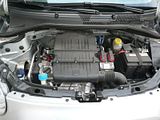   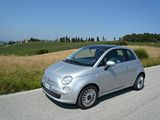
The 500 is fitted with the “City” button, which makes the steering just incredibly light. You would not want to drive on country roads with it switched on, though it could have its uses for tight city parking spots. I left it switched out, and in this mode, the steering is perfectly weighted, and contributes to the sense of fun that you get in driving the car. When Ford’s Ka, which shares its basic underpinnings with the 500, was launched, it was praised for how it was better to drive than the Fiat, thanks to suspension differences. Some of these have now been applied to the Fiat, and certainly my recollection of the Ka I tested last year was that it was little different on the twisties from this Fiat. The one thing which probably could do with some changes is the ride. You might think that British roads are bad, and can challenge the suspension more than somewhat, but so, I can tell you, are Italian streets. Whilst the ride in this 500 is not as hard as in my Abarth, it was still less than smooth on the rough surfaces of even major the Autostrada and Strada Stadale on which I sampled the car. To be fair, the surfaces where it struggled were truly bad and I think any car would have had difficulty retaining its composure. When the surface was smooth, the car rode well, but it picked up almost all the imperfections, of which there were rather a lot. That is a shame, as otherwise, the 500 was a comfortable and relaxed cruiser, with low noise levels when at a steady speed, which belied the fact that this is a small car with a small engine. The car is very easy to manoeuvre, of course, as it is so small, and I thought there was less of an over the shoulder rear blind spot than in the Abarth, even though the body work is the same. With large mirrors, and small overhangs, it is easy to judge the extremities of the car.
 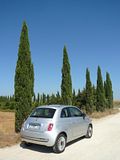  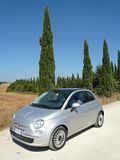 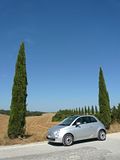 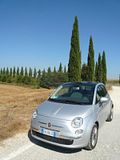 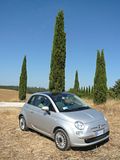 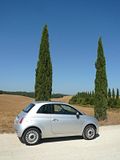
The interior looks familiar to the Abarth owner, but lacking some of the special touches that you find on that model. You still get the body coloured dash, though, which is a feature of the entire 500 range, but you have to make do with a plastic steering wheel, and a different top to the gearlever, and the seats are, unsurprisingly different. The markings on the speedo are different, too. Everything else is familiar. Just like the original Nuova 500, there is a single dial, which has the speedometer and rev counter arranged in concentric semi-circles, and bar chart gauges for fuel level and water temperature inside these arcs. There are displays in the very middle of the dial for odometer and trip computer data. The test car had the much needed air conditioning, which was particularly welcome given the tremendous heat which I experienced. During the early afternoons, I found I needed the fan set to its fourth, and rather noisy setting, to stay cool. The third speed was much quieter and the second almost inaudible. Reminder, were one needed, that opting for full climate control on my Abarth was money well spent. The test car did have the panoramic roof, which added light to the interior. There is a sliding cover which could be used to keep the heat out. I would have liked to have been able to open it, of course. You do get a good quality stereo system, just like the one in my Abarth, mounted up high in the dash, and which has wheel mounted controls to change volume and channel. There is a trip computer operated by a button on the end of the wiper stalk, which will tell you average speeds and fuel consumptions. The seats were trimmed in a checkered pattern, and proved comfortable. There is a height adjuster solely on the driver’s seat, and I would have liked to have been able to set the seat lower, but I had no issues with headroom or indeed the driving position of the 500. Large electric window switches are on the dash, and are easy to operate, with a one-touch function available. The door casings are made of rather hard quality plastics, but overall, the interior of the little 500 is as appealing as the cute exterior, and is definitely preferable to that of the Ka, with which it shares so much.
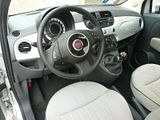 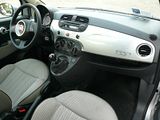 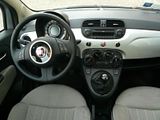 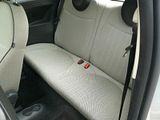  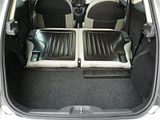 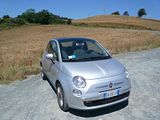
I already knew that despite the fact that this is a small car, there is a surprising amount of room in it. The rear seats would easily house two adults, who would be surprisingly well provided with head and leg room. There are only two seat belts, so Fiat assume you will not try to squeeze a third person in there. The boot is not huge, but it is not as small as you might expect, and it can be extended by folding down the asymmetrically split rear seat. The backrests just drop down onto the cushion. In the cabin, you get moderate door pockets, and a parcel shelf in front of the passenger, which can hold a surprising amount of stuff. Hidden above this is a small glovebox, though you would have to know it is there and the release catch is a bit awkward. There are a couple of slots in between the seats where you could put a camera or phone which proved useful.
 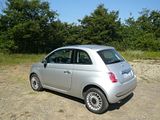 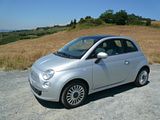  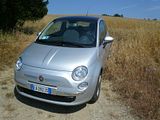 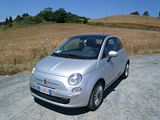
Fiat have made great play of the fact that you can really personalise your 500, with a bewildering array not just of colours and other options, but all sorts of individual touches from stickers to a number of limited edition models. Four “standard” trim levels are available, though the most basic of these, challengingly but perhaps quite accurately called “Naked” does not make it to the UK. We see the Popular, the Lounge and the Sport. When you combine this with the three different engines available at launch with 15 different interior trims, 9 different wheel trims, 19 decals and 12 colours, there were over 500,000 different combinations of the car available. Since then the range has broadened, and colours and trim options have been altered as is the normal course of events during a car’s production life. In Italy, it would seem, the majority of the cars have been left pretty standard, with white unquestionably the most popular colour. Silver, like the test car, was a more recent addition to the colour palette, and I have to say that I think that the pastel shades or very strong colours like red and yellow suit it better.
  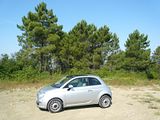 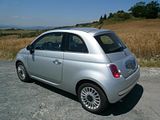  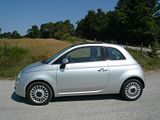 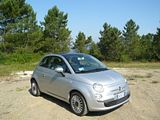  Needless to say, I liked the 500. A lot. Tellingly, I found it far more desirable than its alter ego, the Ford Ka. Of course, I prefer my Abarth, but then it is rather more costly than this 1.2 model. I do suspect that this test car is not the optimum “regular” 500 model, though, and would want to sample the other engine options, including the very promising sounding new TwinAir. That said, if you went and bought one of these cars, I really don’t think you’d be disappointed. Needless to say, I liked the 500. A lot. Tellingly, I found it far more desirable than its alter ego, the Ford Ka. Of course, I prefer my Abarth, but then it is rather more costly than this 1.2 model. I do suspect that this test car is not the optimum “regular” 500 model, though, and would want to sample the other engine options, including the very promising sounding new TwinAir. That said, if you went and bought one of these cars, I really don’t think you’d be disappointed.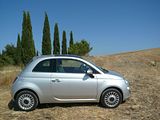 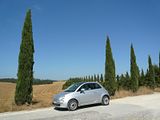 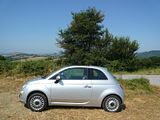 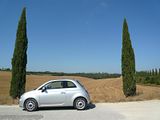 |
